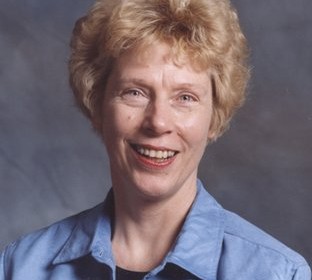
Proclaiming stewardship: A guide for sermons and temple talks
During the past couple of years, three realities have changed the way I teach preaching at Gettysburg Lutheran Seminary. The first is the founding of the Arthur L. Larson Stewardship Center. The second is my standing request for taped sermons, preached by ordained and laity, for use as teaching tools in the classroom here.
The third is a course called “Occasional Sermons.” After several offerings of this course, it became obvious that the course needed to devote one major section to preaching on stewardship. Students who had been on internship and watched the realities of parish life were asking how proclamation is affected by a changing church and society and resources.
So, beginning next year, I will teach the course in two parts and students will begin a new and more concentrated look at what is involved in preaching and the pervasive reality of Christian stewardship.
The following is, therefore, a summary of course gleanings to consider when preachers, both ordained and lay, consider publicly what stewardship means.
1. Ask what the stewardship profile of your congregation is. Before public proclamation, it is necessary to ask: Where have we been? As a congregation, what gifts do we already employ for ourselves and others? Where do we hope to be in the months, the years ahead? Which resources do we need to consider, expand, develop?
In the spirit of true encouragement, speakers should acknowledge that the congregation is not starting at the beginning with their considerations of stewardship.
2. Identify specific texts. Lists of stewardship texts are available from many sources. However, not all are germane to the life of any given congregation. What text or texts best suit the current context of your congregation and its stewardship emphases – both short-term and long-term? Context is everything!
You may wish to choose one organizing biblical theme for repetition in literature, banners, hymns, liturgy, adult and children’s educational materials. Artists can create a unique congregational logo for use in all of these places. Preachers can refer to these visual aids effectively, particularly in children’s sermons.
3. Time Lines. In sharing stewardship realities, speakers can lend momentum to their words by speaking specifically of projects, lending encouragement with the sense that the good fruits of stewardship will emerge, e.g. “We look forward to our upcoming Reformation worship as a time to rejoice over the gathered gifts of this community of faith.”
4. Making the larger connections. A congregation’s stewardship work can strengthen its possibilities through linkage with surrounding community programs. Any garnering of time and talents, “in-house” can be matched effectively with congregational invitations and involvements in local projects. “Habitat for Humanity,” local food pantries, projects ‘walk,’ shelters, are all ways of reinforcing the stewardship-as-life dynamics. Temple talks and preaching can invite people to participate in these: participants themselves may be guest speakers!
5. Proclamatory attitudes. Public preaching regarding stewardship should seriously consider highlighting the following responses: honesty, encouragement, gratitude. First, the speaker must be honest about the information, the possibilities and the resources which she or he is discussing. Envisioning challenges beyond the congregation’s abilities is neither fair nor helpful.
Next, share the stewardship journey of the congregation. No congregation’s stewardship plans begin in a vacuum. There is a history to be noted, maybe even reclaimed! This is important for new and recent members.
Finally, express gratitude; gratitude for God’s guidance and past gifts, for the congregation’s efforts – past, present and future – and for the opportunities to respond with lives of gratitude!
This is the grace note on which to begin and conclude. A sign in the Gettysburg area said this well:
“Today is a rich gift. That is why it is called the present!”
© Copyright 1995, Evangelical Lutheran Church in America.
This essay first appeared in the Fall 1995 issue of Faith in Action. Articles in Faith in Action may be reproduced for use in ELCA and ELCIC congregations provided each copy carries the note: © Copyright 1995, Evangelical Lutheran Church in America. Reprinted with permission.
Stewardship of Life
Thank you for printing this article!
You can view this article online at http://bit.ly/djkIFe.
© 2010 Stewardship of Life Institute
https://westrevision.stewardshipoflife.org




That’s a mold-breaker. Great thnkinig!